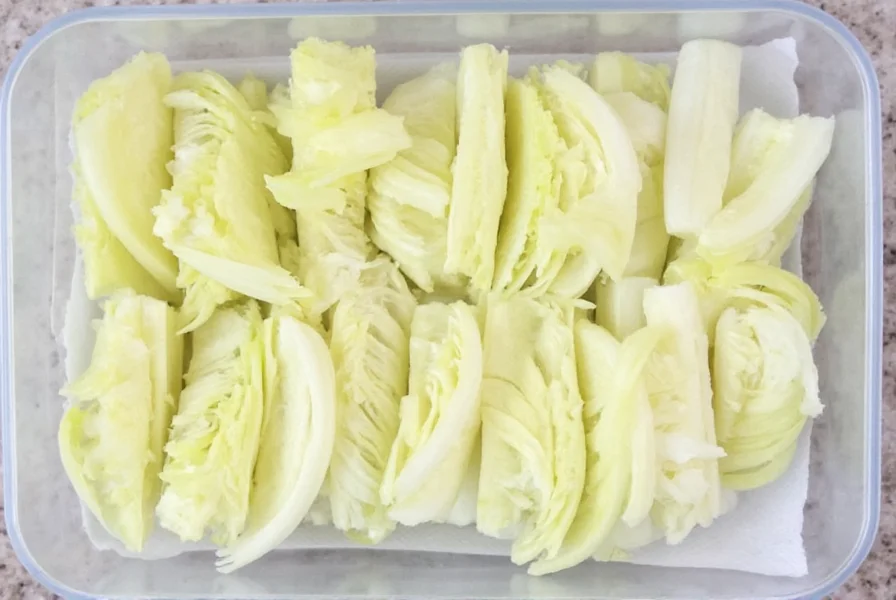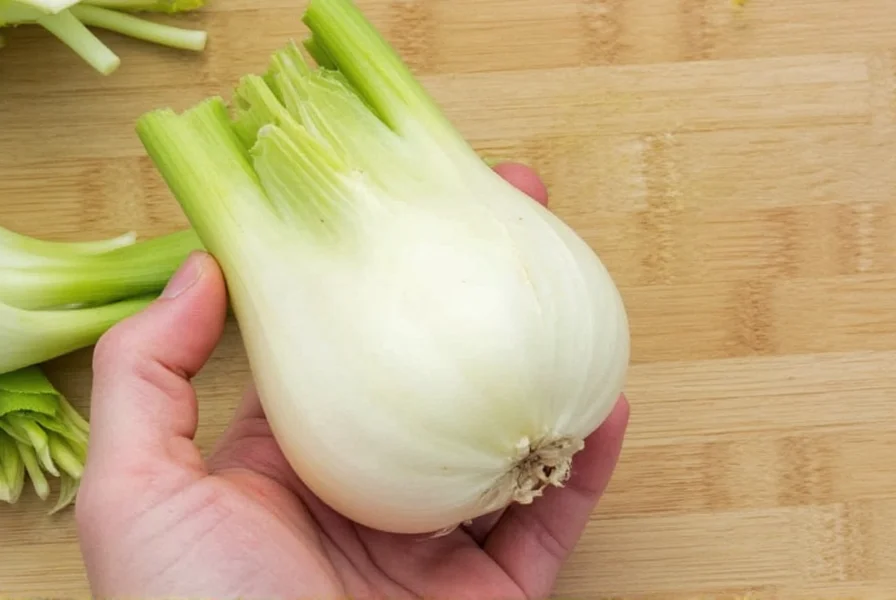Cutting fennel correctly transforms this anise-flavored vegetable from intimidating to incredibly versatile in the kitchen. Many home cooks struggle with fennel preparation, leading to wasted produce or uneven cooking. Mastering fennel bulb cutting techniques ensures optimal texture and flavor distribution in your dishes, whether you're preparing a crisp salad, aromatic soup, or roasted side dish.
Essential Tools for Fennel Preparation
Before you begin cutting, gather these basic kitchen tools:
| Tool | Why It Matters | Alternative |
|---|---|---|
| Sharp chef's knife (8-inch) | Clean cuts prevent bruising the delicate bulb | Utility knife |
| Stable cutting board | Prevents slipping during precise cuts | Wooden board with damp cloth underneath |
| Vegetable peeler | Removes tough outer layers efficiently | Knife for careful trimming |
Step-by-Step Fennel Bulb Cutting Guide
Step 1: Initial Preparation
Place the fennel bulb on your cutting board with the stalk end facing up. Using your chef's knife, cut approximately 1 inch above the bulb to remove the stalks. Reserve the feathery fronds for garnish—they add wonderful flavor to salads and fish dishes. If the outer layer appears dry or discolored, peel it away with your vegetable peeler or knife.

Step 2: Trimming the Base
Lay the bulb on its side and carefully slice off the root end (about 1/4 inch). Don't cut too deeply, as you want to keep the layers intact. Rinse the bulb under cold water, separating the layers slightly to remove any hidden dirt—fennel often traps soil between its layers.
Step 3: Core Removal Options
You have two approaches depending on your recipe:
- For salads and quick cooking: Cut the bulb in half lengthwise through the core. Use a small knife to cut out the tough triangular core from each half. This method gives you clean halves perfect for thin slicing.
- For roasting or grilling: Leave the core intact. Cutting wedges with the core in place helps the pieces hold together during cooking. Simply cut the bulb vertically into quarters or sixths, depending on size.
Step 4: Slicing Techniques
The proper slicing method depends on your intended dish:
| Dish Type | Cutting Method | Knife Angle | Thickness |
|---|---|---|---|
| Raw salads | Thin crosswise slices | Perpendicular to board | 1/8 inch |
| Soups and stews | Medium dice | Cut halves into planks, then dice | 1/2 inch cubes |
| Roasting or grilling | Wedges with core intact | Radial cuts from center | 1.5-2 inch wide |
Professional Tips for Perfect Fennel Every Time
Preventing Browning
Unlike potatoes or apples, fennel doesn't brown quickly when cut. However, for extended prep times, keep cut pieces in a bowl of cold water with a squeeze of lemon juice. This preserves both color and crisp texture—essential for proper fennel bulb preparation for salads.
Maximizing Flavor Distribution
When slicing fennel for sautéing or roasting, cut against the grain (perpendicular to the natural fiber direction) for more tender results. The fibers run vertically from the base to the top, so horizontal slicing breaks them up effectively.
Using the Entire Plant
Don't discard the stalks and fronds! The stalks work wonderfully in stocks and braises, while the delicate fronds make an excellent garnish. Chop the thicker stalk sections small for stir-fries—they have a more intense flavor than the bulb. This complete utilization represents the best way to chop fennel for zero-waste cooking.
Common Cutting Mistakes to Avoid
- Skipping the outer layer removal: Tough outer layers become unpleasantly fibrous when cooked
- Cutting with a dull knife: Crushes the bulb rather than slicing cleanly, releasing too much liquid
- Removing the core for all applications: The core helps wedges maintain structure during roasting
- Not rinsing between layers: Hidden dirt can ruin otherwise perfect dishes
Storing Cut Fennel Properly
Store prepared fennel in an airtight container lined with a slightly damp paper towel. Properly stored, it keeps for 3-4 days in the refrigerator. For longer storage, blanch sliced fennel for 2 minutes, then freeze in portion-sized bags—ideal for when you need prepped fennel for soups during busy weeks.

Adapting Cuts for Specific Recipes
Different dishes require specific fennel preparations. For a classic Italian fennel and orange salad, use a mandoline for paper-thin slices that become almost translucent. When preparing fennel for braising with fish, cut larger chunks that won't disintegrate during cooking. Understanding these nuances in fennel bulb cutting methods for cooking ensures perfect results regardless of your recipe.
Can I eat the entire fennel bulb, including the core?
While technically edible, the core of a fennel bulb is quite tough and fibrous. For raw applications like salads, remove the triangular core for better texture. When roasting or braising, you can leave the core intact as it helps the pieces hold together during cooking and softens considerably with prolonged heat.
How thin should I slice fennel for a salad?
For raw fennel salads, aim for paper-thin slices about 1/8 inch thick. This thinness makes the fennel pleasantly crisp without being tough. Using a mandoline slicer works best for achieving consistent thin slices. If you don't have a mandoline, a very sharp knife and slow, careful slicing will produce good results.
Why does my cut fennel become slimy?
Fennel becomes slimy when stored improperly or cut with a dull knife that crushes rather than slices the bulb. Always use a sharp knife for clean cuts, and store cut fennel in an airtight container with a slightly damp (not wet) paper towel. Avoid washing fennel until you're ready to use it, as excess moisture accelerates spoilage.
What's the best knife technique for slicing fennel without tearing?
Use a sharp chef's knife with a smooth, gliding motion rather than chopping straight down. Place the flat side of halved fennel down for stability, then use a gentle back-and-forth sawing motion while applying downward pressure. Keep your fingers curled safely away from the blade. A sharp knife requires less force, preventing the fennel layers from separating unexpectedly.
How do I prevent fennel from smelling up my kitchen while cutting?
Fennel's strong anise scent is most pronounced when cut. To minimize the aroma, work near a vent or open window. Some chefs recommend running a fan to circulate air. The smell dissipates quickly after cooking begins. If particularly sensitive to the scent, try cutting fennel under cold running water, which helps contain the volatile oils responsible for the strong aroma.











 浙公网安备
33010002000092号
浙公网安备
33010002000092号 浙B2-20120091-4
浙B2-20120091-4